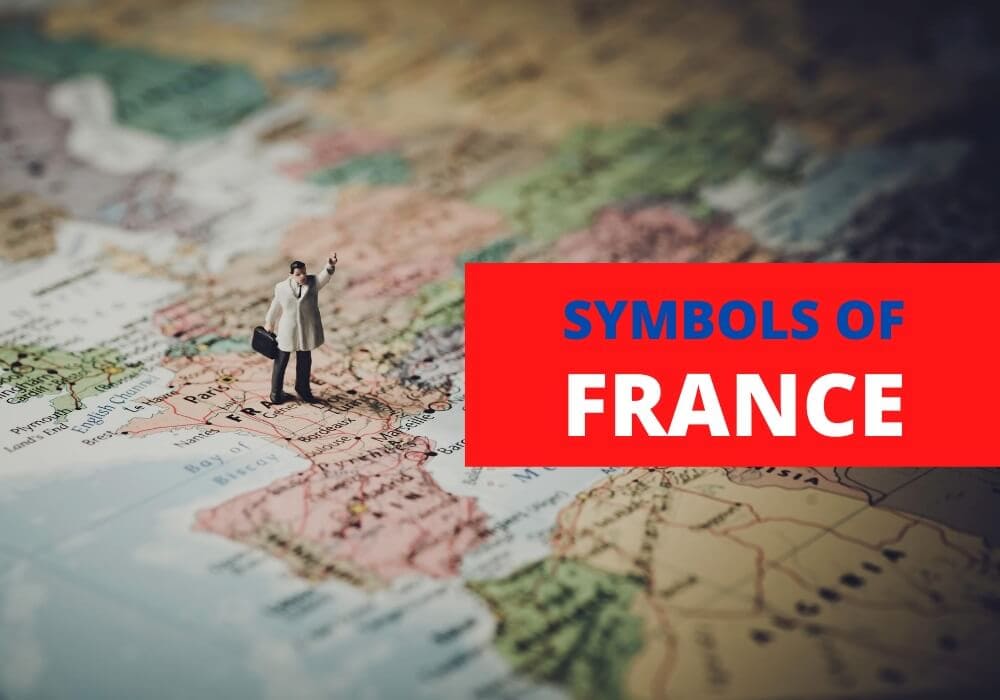
Table of Contents
One of the most popular and visited countries in the world, France is home to the most romantic destination in the world (Paris), numerous UNESCO heritage sites (41 in total) and the first country in the world whose cuisine was recognized by UNESCO as “tangible cultural heritage”.
France continues to maintain its reputation as a diverse and stunning country with a rich cultural heritage. It’s many official and unofficial symbols represent this beauty, culture and diversity. Here’s a list of the most popular French symbols and why they’re significant.
- National Day: July 14, Bastille Day
- National Anthem: La Marseillaise
- National Currency: Euro and CFP (called franc)
- National Colors: Blue, white and red
- National Tree: Oak tree
- National Flower: Fleur-de-lis (flower of the lily, cultural not official)
- National Animal: Gallic Rooster
- National Dish: Pot-au-Feu
- National Sweet: Clafoutis
The National Flag of France
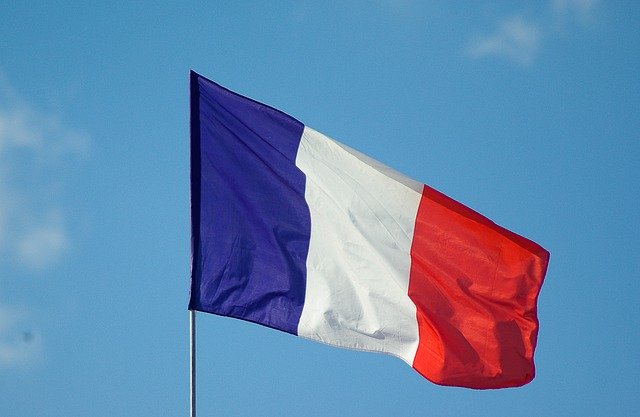
The flag of France, known as the ‘French Tricolor’ in English, is said to be one of the most influential flags in the world. Its three-color scheme has inspired the flags of several other nations in Europe as well as in the rest of the world.
The flag, formally adopted in 1794, consists of three, vertical stripes – blue, white and red from the hoist to the fly end. The color blue represents the nobility, white the clergy and red the bourgeois, all old regime estates in France. When it became the national flag of the country, the colors represented the French Revolution and its values including equality, democracy, secularism, brotherhood, liberty and modernization.
In modern representations of the flag, there are two versions in use, one darker and the other lighter. Although both are used equally, the light version is more commonly seen on digital displays. It’s also used on the official State buildings whereas the darker version is flown from town halls, barracks and public buildings throughout France.
Coat of Arms
The French coat of arms is made up of several elements including a wide shield in the center bearing the monogram ‘RF’ (Republique Francaise), surrounded by the heads of a lion and an eagle.
On one side of the shield is an oak branch, symbolizing wisdom and eternity, while on the other side is an olive branch, which is symbolic of peace. In the centre of it all is the fasces, a symbol of power, authority, strength and justice.
The coat of arms, adopted in 1913 by the French Foreign Ministry, is a symbol used by French diplomatic missions and was based on a different design. Before the French Revolution, the emblem of a blue shield featuring a golden fleur-de-lis had been used for almost six centuries. Some versions of it include a crown, placed on top of the shield.
However, after the current design was adopted, it continued to be used with slight modifications now and then. It appears on legal documents in France as well as on the cover of the French passport.
Cockade of France
Named the national ornament of France, the French cockade is made of a circularly pleated ribbon in the same colors as the French flag with blue in its center, white in the middle and red on the outside. The three colors (blue, white and red) represents the three estates of French society: the clergy, the nobility and the third estate.
The French cockade, also known as the tricolor cockade’, was designated the official symbol of the French Revolution in 1792. The cockade was used on military vehicles and on French state aircrafts with a yellow border added to it just after World War II. In 1984 it was decided that the border be removed, and the ornament remained tricolored. It’s now used on elite uniforms, mayors’ badges and the sash worn by Miss France in the national beauty pageant.
Marianne
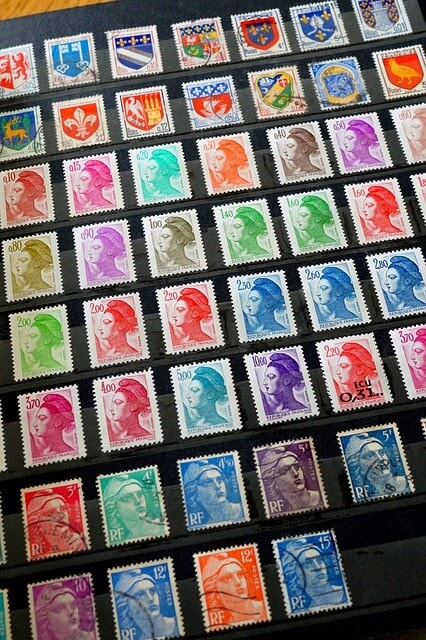
A famous symbol of the Republic of France, Marianne is a bust of a determined and proud woman donning a Phrygian cap. She is symbolic of the attachment common citizens of the French revolution had for the Republic and stands for liberty, fraternity and equality.
Since 1944, Marianne has been used on stamps, both definitive (sold year after year) and commemorative (made to commemorate an event). When she’s not clearly depicted wearing a Phrygian cap, like on the Cheffer and Muller Marianne stamps, she’s known as the ‘Republic’.
A significant national icon, Marianne represents the opposition to monarchy and the championship of democracy and freedom against all kinds of oppression. She will also be featured in the 2024 Summer Olympics and Summer Paralympics in Paris as one of the main elements of the official emblem.
Gallic Rooster
The Gallic Rooster (or Gallic cock) is one of the unofficial national symbols of France as well as a symbol of the French Community of Belgium and the Wallonia region. During the Revolution, it adorned French flags and became symbolic of the French people.
Historically, French kings adopted the rooster as a symbol, making it a symbol of bravery and courage. During the Revolution it became a symbol of the State and the people. In the Middle Ages, the rooster was extensively used as a religious symbol, a sign of faith and hope, and it was during the Renaissance period that it began to be associated with the newly emerging French nation.
Today, the Gallic Rooster can be seen in numerous places such as on French stamps, coins and at the entrance of the Palais de l’Elysee in Paris. It’s also featured on the jerseys of several sports teams in France as well as on the shirts of the Olympic athletes.
The Seal of State
The official seal of the Republic of France was first minted in 1848. It features the seated figure of Liberty, brandishing a fasces (a bundle of wooden rods bound together with rope and with an axe in the center). The fasces was a symbol of unity and authority in Ancient Rome used by the exercise of justice. Near Liberty is an urn with the letters ‘SU’ that stand for universal suffrage and at her feet is a Gallic Rooster.
The reverse of the seal depicts a wreath made of stalks of wheat, a laurel branch and a vine branch. In the center is an inscription ‘Au nom du people francais” meaning ‘in the name of the people of France’ and the Republic motto ‘Liberte, Egalite, Fraternite’ meaning Liberty, Equality and Fraternity.
Today, the Great Seal of France is reserved only for official occasions like the signing of the Constitution and any amendments made to it.
Yew – National Tree of France
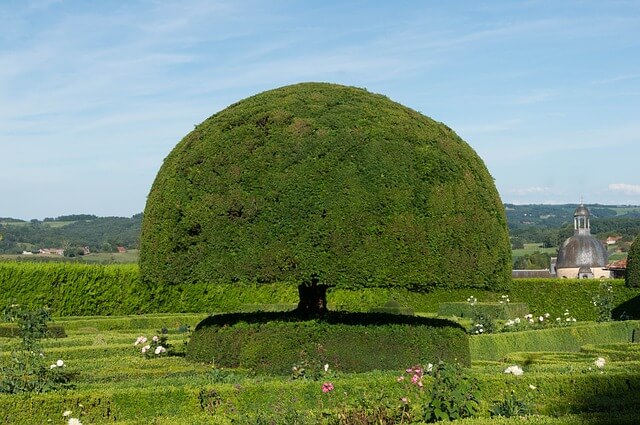
The European Yew is a tree is a conifer, native to many areas of Europe and grown as an ornamental tree in the country. It can grow up to 28 metres and has thin, scaly bark that comes off in small flakes. The leaves of the Yew are flat, dark green and quite poisonous. In fact, ingesting not just the leaves but any part of this plant can result in a quick death.
The toxicity of the Yew limits its use for humans but its wood, which is orange-red and darker towards the center than on the edge, is highly valued by instrument makers. It was also used in the past to make furniture and medieval English longbows.
When old Yew branches fall or droop, they can root, forming new trunks wherever they touch the ground. Due to this, the Yew became symbolic of death and resurrection. Although it’s the national tree of France, the country isn’t blessed with many Yews. In fact, it’s said that there are only about 76 yew trees in the whole of France and many of them are over 300 years old.
Clafoutis
Clafoutis is a delicious French dessert that’s made of fruit (typically blackberries), baked in batter, dusted with powdered sugar and served with cream. This classic French dessert comes from the Limousin region in France. While black cherries are the tradition, there are now many variations of it using all types of fruits including plums, prunes, pears, cranberries, or cherries.
Clafoutis began to spread throughout France in the 19th century and became highly popular, designated as the national sweet somewhere around that time. It remains a much-loved dish and although there are many versions of it now, the traditional recipe is still a favorite among most people.
The Fleur-de-lis
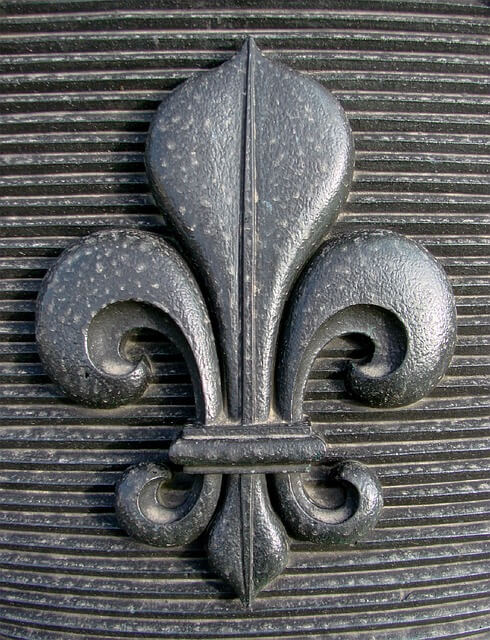
The Fleur-de-lis, or Fleur-de-lys, is a stylized version of the lily that’s famous as the official symbol of France. It was used in the past by French royalty and throughout history it represented the Catholic saints in France. St. Joseph and the Virgin Mary are often depicted with a lily. It’s also believed that it represented the Holy Trinity.
However, the Fleur-de-lis isn’t as innocent as it appears, as it holds a dark secret. It’s seen as a symbol of slavery by many since it was used to brand slaves in the past as punishment for trying to escape. This took place in French settlements all over the world which is why it also has associations with racism.
Today, it appears on numerous European flags and coats of arms over centuries and has been associated with the French monarchy for almost 1000 years. It’s also seen on postage stamps, decorative ornaments and in artwork by the earliest human civilizations.
La Marseillaise
The national anthem of France was first written in 1792 by Claude Joseph Rouget De Lisle after war was declared against Austria. Its original title was ‘Chant de guerre pour l’Armee du Rhine’ meaning ‘War Song for the Army of the Rhine’ in English. In 1795, the French National Convention adopted it as the national anthem, and it got its current name after it was sung by volunteers from Marseille who marched to the capital.
The song lost its status as the national anthem under Napoleon I and was banned by Charles X and Louis XVIII but it was later re-instated once the July Revolution was over in 1830. Its anthemic style, evocative lyrics and melody was what led to it being used as a song of the revolution and it was also incorporated into various pieces of popular and classical music.
However, many young French people find the lyrics too violent and unnecessarily so. Today, it remains one of the most violent of national anthems, focusing on bloodshed, murder and brutally vanquishing the enemy.
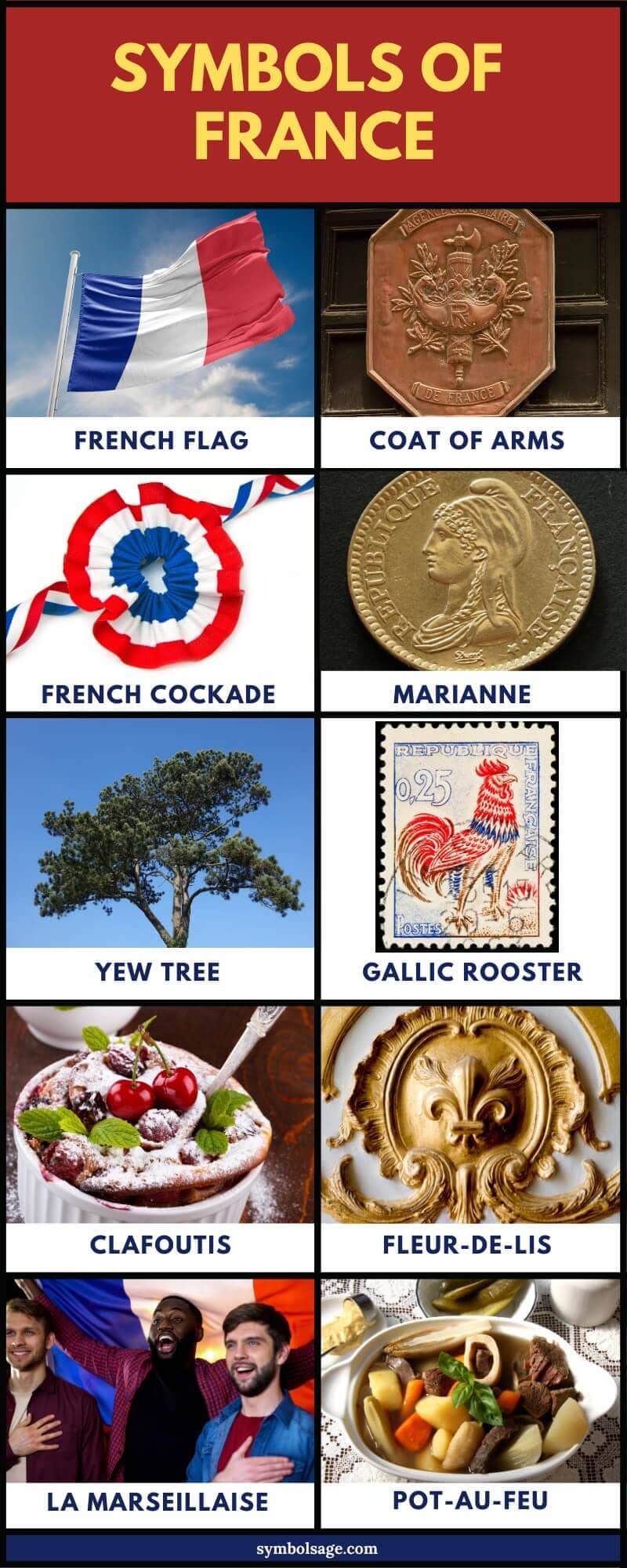
Wrapping Up
The above list of French symbols, while not exhaustive, cover many of the famous emblems of the country. To learn about the symbols of other countries, check out our related articles:








